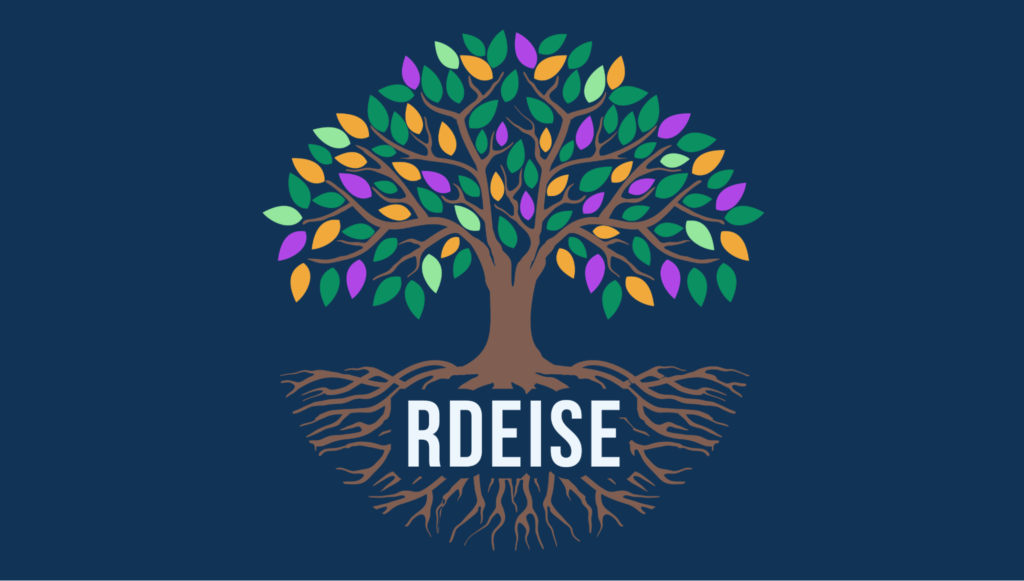
The Personal Roots of the RDEISE Project
As we get closer to officially launching the Racial Diversity, Equity, and Inclusion in Science Education project, we want to share the stories of three of our graduate fellows. Beyond being incredibly knowledgeable about their research topics, our fellows also bring with them lived experience that relates to the topics they study.
Here, we dive deeper into some of the profound personal stories that shape the graduate fellows’ work.
When Mia Thornton examines the social determinants of health, she draws from a deeply personal experience of growing up in a food desert. Mia writes about the parallels between her research and experience:

“Always a good source for a loaf of bread or a box of cereal, despite having produce that looked as tired as I was after a full-time school and work schedule. There I found a sense of belonging, rummaging through the barely salvageable onions, heads of lettuce, and ears of corn, like everyone else.
My home was different, some might say depraved. But, colorful and alive, all at the same time. Once referred to as the ‘Boogie Down’ by urban youth, it is now the place of transplants like me. The noise from the above ground 2 train drowned out the sounds of the children playfully walking home from school in plaid, Catholic uniforms. It was just another day in the Bronx!
What was not obvious then, but is quite obvious now, is that I was living in a ‘food desert,’ a term used to describe urban communities that lack the availability of nutrient rich foods. The community, as brown as I was, but not always as hopeful, had lived there for generations, attesting to the fact that very little changes in some communities. As a result of that experience, though, I am forever changed and better positioned to assist others with appreciating the micro, mezzo, and macro factors that shape our everyday lives and the continuum of conditions that influence our collective health.”
Similarly, Brianna Holiday’s work on diabetes and the environment is rooted in her family history of food insecurity. Brianna writes:

“The neighborhood families were plagued by income disparities and health inequalities, which often led to early onset of diabetes, high blood pressure, and heart disease. He had limited access to high quality food. He and his family were lucky to have three meals a day, so planned nutrition was not a luxury they could afford. Thus, healthy eating simply took a back seat to daily survival. As a result of my father's upbringing, he decided that I would have a high level of exposure to proper diet and nutrition at an early age. Due to my exposure to a healthy diet at an early age, and later as a dietetics and nutrition major, I was able to avoid many of the conditions that plagued my father. I am now aware that populations who lack the access to adequate food resources are shown to have higher rates of diabetes, obesity, and cardiovascular disease. What a difference dietary education would have made for my father and his family. He sought for me what he did not have the benefit of himself.”
Choosing to contribute work to the RDEISE project in the first place also stems from quite a personal place for many of the research fellows.
For example, when Veronica Wylie writes about the importance of representation in STEM, she’s basing that off her own experience with math and science as a student:
“As a student, science and math were subjects from which my classmates and I felt largely disconnected. Not only were most of the concepts intangible, but the scientists and mathematicians who we studied had no connection to us. They were all White, and all but Madame Curie were male. Needless to say, I, like so many others, grew up seeing STEM fields as being a ‘them’ thing, and was not aware of the role that people of color had played in STEM fields historically.
.png)
Seldom, if ever, being active in math and science. Before I even started my journey, I was conditioned not to see myself in these fields, and was therefore more attuned to professional arenas that were more tangible, and at least at the surface, more an ‘us’ thing.”
The personal connections that these graduate fellows have with their research means that their contributions to the RDEISE project are filled with passion. When you engage with the content in the next few months, you will clearly see that this work means a lot to everyone on the team.
Read our spotlights on the RDEISE project’s learning designers, graphic designers, writers, and web developers to see just how committed the team is to inclusion.
Subscribe to our newsletter to make sure you’re updated on the RDEISE project regularly.
.svg)

.svg)



